Wildfires Point to Global Warming
By Brook & Gaurav Bhagat

The afternoon sun burns red in the smoky Colorado sky, its rays crackling through the clouds like varicose veins. The smoke from the massive southern Coloradan West Fork Complex Fire not only blankets most of the state, but, according to NASA, it can be seen from space, and it reached European airspace on June 24.
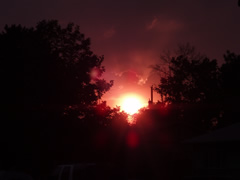
Most residents of the American Southwest don’t complain about the air pollution, which in itself is harmful; rather, they think of friends, neighbors and strangers who have lost everything in the wildfires, and are quick to help however they can. 2012 was the worst year in recorded history for both New Mexico and Colorado forest fires. According to Infoplease.com, the Whitewater Baldy Fire burned over 297,845 acres in the Gila National forest of New Mexico, breaking the record set in 2011 by the Las Conchas Fire.
In Colorado, nearly a dozen simultaneous blazes scarred the state, destroying over 244,000 acres of land, more than 600 homes and other structures; they took the lives of six human beings. Halfway through the summer of 2013, surpassing the record set the previous year by the Waldo Canyon Fire, the Black Forest Fire made Colorado history for a single fire’s total destruction. According to Inciweb, the fire burned over 14,000 acres and more than 500 structures, and the cost of fighting the fire was over $9,323,955. Local newspapers expect claims of property losses to top $9 million. Two people died in the blaze.
Neighboring Arizona, in the middle of a historic drought, is also setting the kind of records no one wants to set. The 19 firefighters who died in Prescott on June 30th, 2013 are sadly the U.S’s greatest loss of firefighters in a wildfire in 80 years.
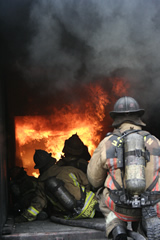
“This is as dark a day as I can remember,” said Arizona Governor Jan Brewer in a statement. “It may be days or longer before an investigation reveals how this tragedy occurred, but the essence we already know in our hearts: Fighting fires is dangerous work.”
Summer blazes on, and forest fires continue to burn in Arizona, New Mexico, Colorado, Nevada, California, and even Alaska. In addition to these heroic firefighters and innocent citizens, ongoing casualties include homes, businesses, and the countless lives of animals and their homes as well. Record temperatures, heat waves and ongoing droughts are making fire danger extreme in the American southwest and other regions. An analysis of the climate statistics of today compared with those of the past 100 years indicates that conditions really are getting worse, likely due to global warming. In order to deal with the situation, it is essential that we understand the extent of these wildfires, their short- and long-term ramifications, the reasons why they are happening and, most importantly, possible solutions.
One factor that has literally added fuel to the western fires is mountain pine beetles, who feed on the bark of several varieties of pine trees. They introduce a fungus beneath the bark which not only prevents the tree’s natural defense of tree pitch flow, but also stops the movement of water and nutrients. This leaves a ready feast for the beetles, who eat their fill and move on. The tree stands dead and dry, and within one year its once-green pine needles will be red. After four or five years, it will be gray, perfect fodder for forest fires.
Found throughout North America and Canada, the mountain pine beetles were once considered helpful to overall forest health, generally attacking old or otherwise weakened trees, which makes room for younger ones. Higher temperatures, however, have made it easier for the beetles to survive the winter, and droughts make it even more difficult for the pine trees to fight them. Ecologists have recently confirmed that the beetles are able to complete two generations during the ever longer and warmer summer seasons in Colorado, compared to a life cycle that used to take between one and two years; this means a possible 60-fold increase in the total number of insects. Beetle infestations have reached epidemic proportions throughout North America—approximately 10 times greater than in previous years. Rather than simply feeding off the weakest trees in a forest, these huge populations of beetles can move like clear-cutters, consuming every tree in their path and leaving huge stands of dead trees in their wake.
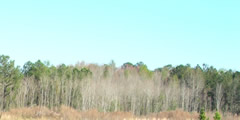
The beetles have benefitted greatly from global warming, and contribute to it as well. When a mature tree dies, it releases large amounts pent-up carbon dioxide into the atmosphere. Large swathes of dry standing timber represent a virtual tinderbox, which will again give off carbon dioxide if they catch fire.
One result of global warming, according to the Union of Concerned Scientists, is that wet areas are becoming even wetter and dry areas even drier. The Colorado snowpack in recent years, due to unusually warm and dry winters, is only a fraction of what it was in the past, and the hot, dry summers that follow make the forests highly combustible. In a comparative study of climate statistics published in Science Journal, scientists confirmed that, since the mid-1980s, wildfires are happening four times more often, lasting five times longer and consuming six times more land than in the past.
Another effect of climate change is increasingly severe thunderstorms, which produce more lightning, one of the most common ways wildfires are ignited. Thunderstorms that happened during the Waldo Canyon Fire of 2012 were assumed at first to be a sign of relief, but in fact the opposite was true—the storms brought very little rain, and plenty of lightning and high winds, actually fanning the flames and causing the fire to spread.
Even after a wildfire is over, the land is slow to recover. In mountainous regions, a burned area is particularly susceptible to flash flooding—a serious threat to life and property— because of the lack of vegetation and the inability of burned soil to absorb precipitation. Ash can pollute the water supply, and there may even be unexpected phenomenon related to the loss of animal habitat from a fire. In one mountain town, for example, the weeks following a major forest fire last year brought a decrease in tourists, but an unprecedented increase of black bears into the town, rummaging in garbage cans for food.
There are of course ways to make your own home less vulnerable to fire—clean up excess fire fodder around the perimeter to create a defensible area, remove lower branches of nearby trees, keep your rain gutters clean and don’t smoke in bed. While there are many Googleable prevention tips for your own safety that can and should be followed, these don’t address the major cause of the increased fire danger: global warming.
There are steps that you can take to reduce your carbon footprint by thinking about what you buy and what you do, like driving an environmentally friendly vehicle, driving less, or using a bike, your feet or public transportation and not driving at all. At home, remember that the electricity you use probably comes from a coal-burning power plant, and unplug appliances and other electronics when you’re done using them. Reduce energy waste and save money by insulating your home and using fluorescent light bulbs. There are lots of other tips and suggestions out there for things we all can do, readily available online.
While it’s important to be aware of and responsible for our own individual contributions to climate change, the situation won’t improve until our governments and corporations do the same. Take the initiative to research the companies you support when you buy their products. Where do they stand on climate change, and what are they doing about it? Ask government officials the same question; get informed, get involved, and demand a change in business as usual. And if your friends, neighbors or corporate call centers tell you that this is just the way it is, ask if they have any children, or know any children. Thanks to global warming, wildfires are just one of many increasing natural disasters, hanging over their heads like smoke on the horizon. If we want them to have a future, we have to change our ways of thinking and change our ways of living. And that’s just the way it is.
Global warming explained in two minutes by the Union of Concerned Scientists
Did you like the article? Subscribe here to our New Article Email Alert or RSS feeds.
Sharing is caring! Don't forget to share the love, and keep the conversation going by leaving a comment below:
Advertisement
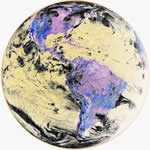
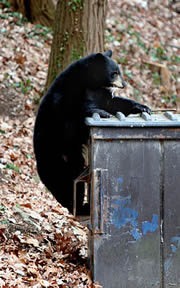 By anoldent [
By anoldent [